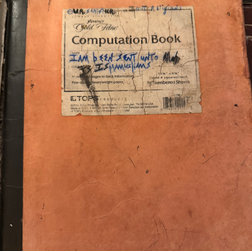
The Uncle Mike Project
For my Computer Science senior project at Harvey Mudd College, I developed a Large Language Model (LLM) based on the transcribed writings of my late Uncle Mike, who left behind nearly 6,000 pages of journals spanning over 20 years. These journals covered topics ranging from religion to war to his daily reflections, offering a deeply personal glimpse into his thoughts and worldview. Uncle Mike suffered from schizophrenia and epilepsy, and my project aimed to create a model that could replicate his unique writing style and emulate his way of thinking as closely as possible. His conversations will be posted to the X account @UncleMikeLLM.
CA:

Uncle Mike tragically passed in a car accident a few years back. Above is the news coverage from the incident.
From Handwritten Journals to AI-Driven Conversations
The first stage of the project involved digitizing his handwritten journals. Using Transkribus, a powerful tool for handwriting recognition, I transcribed a batch of the scanned pages into machine-readable text. This required fine-tuning the handwriting model in Transkribus to accurately recognize Uncle Mike’s handwriting, which was challenging due to the variance in his penmanship over the years. The output was preprocessed using Python libraries like NLTK and SpaCy to clean the data, segment it into meaningful chunks, and normalize inconsistencies while preserving the idiosyncrasies of his style.
To build the LLM, I leveraged Hugging Face Transformers and fine-tuned a pre-trained GPT-3 model using Uncle Mike’s transcribed writings as the dataset. The fine-tuning process involved curating a dataset with attention to semantic coherence, tone, and grammatical patterns that were reflective of his mental state and cognitive frameworks. I used custom loss functions and attention mechanisms to weigh specific linguistic features that were prevalent in his writings, such as his philosophical digressions or his tendency to juxtapose abstract concepts. The model was trained on a NVIDIA A100 GPU cluster to optimize training time and accuracy.
To emulate Uncle Mike’s thought process, I implemented additional layers to simulate the influence of his schizophrenia, dementia, and epilepsy on his cognitive patterns. Using synthetic data augmentation techniques, I introduced variability into sentence structure, logical reasoning, and mood transitions. This was further enhanced with Recurrent Neural Networks (RNNs) to capture temporal dependencies, ensuring the LLM could produce reflections that felt temporally grounded while reflecting his nonlinear train of thought.
The final model was deployed as an interactive chatbot using a Flask-based web interface, enabling users to converse with “Uncle Mike” and explore his perspectives on a variety of topics. The interface was optimized for real-time inference using ONNX Runtime to ensure efficient deployment. Ethical considerations were central to the project, and user interactions were logged and analyzed to ensure the model responded in ways that honored Uncle Mike’s legacy while maintaining safeguards against generating harmful or insensitive outputs.
This project was a deeply technical and personal exploration of how machine learning can preserve and emulate human cognition through the lens of language. It underscored the potential of AI to create meaningful interactions with digital representations of loved ones, while also raising questions about the ethical boundaries of such endeavors.
Code
This code demonstrates the technical implementation for creating an LLM based on Uncle Mike's writings. It uses Python libraries like Hugging Face Transformers, SpaCy, and Flask, combined with ONNX Runtime for optimized deployment.
The Journals of Uncle Mike
Explore the handwritten pages that form the foundation of Uncle Mike’s LLM. Below are some snippets from the scanned pages inputted into Transkribus. Over 6000 pages were scanned to build the LLM. Each journal captures a lifetime of thoughts, theories, and reflections. However, Uncle Mike’s handwriting presented a unique challenge—The handwriting was so intricate and inconsistent that we had to manually transcribe 50 pages to create a custom language model for the AI to read the text accurately. This painstaking process allowed us to decode his words and transform them into a digital corpus, ensuring that his one-of-a-kind perspective could live on.


























